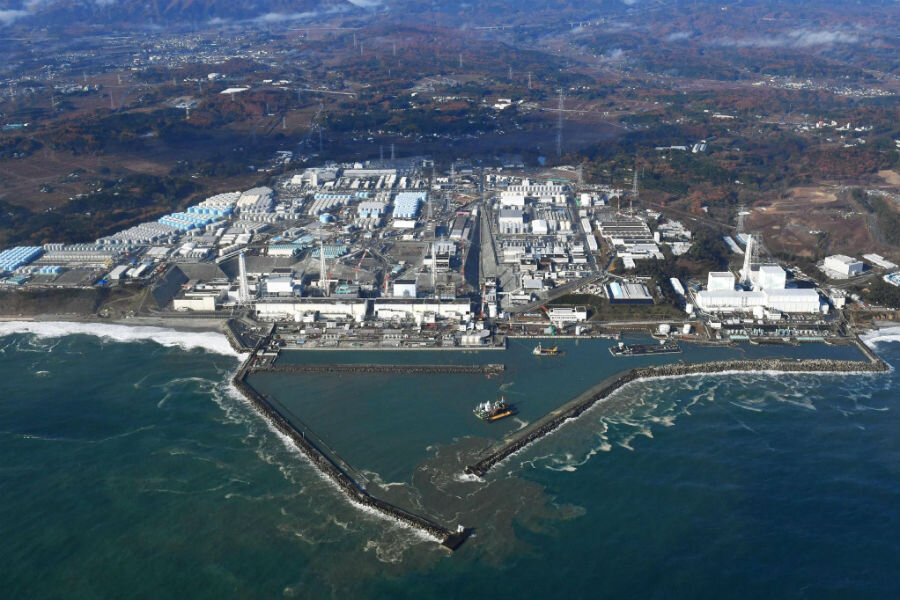No danger seen from Fukushima 'fingerprint' on US West Coast
Loading...
The radiation plume from Japan’s Fukushima nuclear disaster in 2011 has finally arrived on the shores of the continental United States.
A group of researchers from Woods Hole Oceanographic Institution for the first time found traces of Cesium-134 , an element that serves as a “fingerprint” indicating the presence of radiation from the Fukushima incident, in seawater samples taken off the shores of Oregon in January and February.
But there is no reason to worry, say researchers, who emphasize that the levels are very low and pose little risk to human health – swimming in the water or eating seafood shouldn’t be a concern.
“To put it in context, if you were to swim everyday for six hours a day in those waters for a year, that additional radiation from the addressed cesium from Japan ... is 1,000 times smaller than one dental x-ray," Ken Buesseler, senior scientist at Woods Hole told USA Today.
Research that tracks how the radiation plume travels, however, is especially significant at a time when nuclear energy is increasingly being considered as a zero-carbon alternative to fossil fuels for energy production. With the Fukushima and Chernobyl nuclear disasters still fresh in recent memory and authorities still working to containing the contamination from these nuclear accidents, critics of nuclear energy have been reluctant to dismiss safety concerns of nuclear power. The latest findings will help the world understand more fully the implications of relying on nuclear energy.
“Despite the fact that the levels of contamination off our shores remain well below government-established safety limits for human health or to marine life, the changing values underscore the need to more closely monitor contamination levels across the Pacific,” Dr. Buesseler said in a press release regarding his research in December. “[T]hese long-lived radioisotopes," he said, "will serve as markers for years to come for scientists studying ocean currents and mixing in coastal and offshore waters.”
As reported by the United Press International, Buesseler intends to examine how radiation is dispersed through the ocean and how long it takes, which can be valuable information in the future for scientists to predict where the radiation will be headed if a similar disaster were to happen.
Buesseler's team of researchers are part of a crowdfunded project that tests ocean water off various locations to examine the impacts of fallout and runoff from the Fukushima nuclear power plant as levels are expected to rise over the years.
The seawater was contaminated in 2011, when a massive earthquake damaged Fukushima’s nuclear reactors. Scientists have found that the nuclear plant continues to leak contaminated water, although a new “ice wall” was erected in March to contain the pollution.
Fukushima is not the only source of radiation-contaminated seawater. Other culprits are naturally-occurring radioactivity in the ocean, the 1986 Chernobyl accident, and global nuclear weapons testing in the 1960s.
Cesium-134 is used to “fingerprint” Fukushima’s contribution because it has a half-life of just two years, which means that it has only recently emerged in the ocean. Scientists also track cesium-137, which has a longer 30-year half-life, and its levels will illuminate radioactive pollution from the nuclear testing and past nuclear accidents.
From the samples taken earlier this year off Oregon, only 0.3 Becquerels per cubic meter of Cesium-134 were measured, as reported by Statesman Journal. Samples off the West Coast in the last year also showed higher levels of Cesium-137, although the highest total level of Cesium detected in waters off the shore of the United States is still more than 500 times lower than EPA’s safety limits for drinking water.
"We don’t expect to see health concerns from swimming or fish consumption, but we would like to continue monitoring until (the radiation level) goes back down again," Buesseler told USA Today.
Buesseler and other research groups are also tracking the presence of the Cesium isotopes and other radioactive elements in fish that travel across the ocean from Japan to determine how the ocean can dilute – or wash out – traces of these harmful elements.






